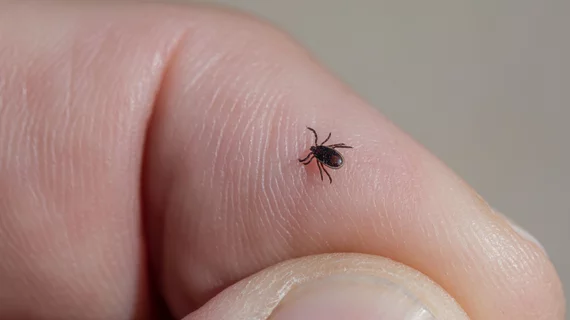Lyme disease neuroimaging uncovers compensatory brain repair
Lyme disease patients treated for “brain fog” may develop compensatory alterations in white matter that show up on MRI and correspond—unexpectedly—with slow but sound cognitive performance.
The finding was made outside of a pursued hypothesis by Johns Hopkins researchers. The project is described in a study published Oct. 26 in PLOS One [1] and covered in a student-reported article posted Nov. 8.
Corresponding author Cherie Marvel, PhD, and colleagues originally set out to confirm that post-treatment Lyme disease (PTLD) patients show altered task-related brain activations on functional MRI.
This they found, noting that some activations they observed in gray matter regions had not been previously documented in PTLD patients.
What’s more, the PTLD group activated different gray regions than a control group of healthy adults while under-activating regions that should have lit up during certain tasks.
Despite the hypo response, the PTLD group performed the task somewhat more slowly but no less accurately than the controls, “suggesting that the PTLD group relied on compensatory mechanisms to complete the task.”
More striking still, Marvel and colleagues found that, “unexpectedly, three frontal lobe activations demonstrated by the PTLD group were located primarily within white matter.”
Cognition ‘Dynamically Affected Throughout the Repair Process’
Applying diffusion tensor imaging (DTI) techniques, the team found that higher axial diffusivity correlated with fewer cognitive and neurological symptoms.
The DTI further revealed several frontal lobe regions in which higher axial diffusivity in the patients with PTLD correlated with longer duration of illness, Marvel and co-authors report.
More:
Together, these results show that the brain is altered by PTLD, involving changes to white matter within the frontal lobe. Higher axial diffusivity may reflect white matter repair and healing over time, rather than pathology, and cognition appears to be dynamically affected throughout this repair process.”
Other Uses for the Demonstrated Methods of Multimodal Neuroimaging
Marvel et al. remark that their results may help inform diagnostic and therapeutic approaches for multiple sclerosis and other diseases characterized by white matter pathology.
Also standing to build on the findings is research into illnesses in which “cognitive complaints follow disease onset in the absence of objective methods to confirm neuropathology.” Indications in this category might include chronic fatigue syndrome, fibromyalgia and post-acute COVID, the authors suggest.
Further, the authors write, the use of multimodal neuroimaging methods like the ones used in the present study “may be a viable approach for obtaining information on brain function and structure to identify biomarkers of disease burden.”
The study is posted in full for free, as is the Nov. 8 coverage in the Johns Hopkins student newspaper.

